 The New York Times recognized one Birmingham station, Allbrittons WBMA-TV, for its live coverage. The local ABC affiliates veteran Meteorologist James Spann covered the mile-wide tornado as it approached his viewing area. The Times noted that following the storm Spann received hundreds of comments on his Facebook page. One viewer wrote, "I have no doubt that you saved too many lives to count." New Vision Media-owned WIAT-TVs chief meteorologist Mark Prater also covered the storm for Birminghams CBS affiliate. The Times reported Prater relied on traffic cameras and other video sources to keep his viewers informed as the twister plowed through parts of Alabama.
The New York Times recognized one Birmingham station, Allbrittons WBMA-TV, for its live coverage. The local ABC affiliates veteran Meteorologist James Spann covered the mile-wide tornado as it approached his viewing area. The Times noted that following the storm Spann received hundreds of comments on his Facebook page. One viewer wrote, "I have no doubt that you saved too many lives to count." New Vision Media-owned WIAT-TVs chief meteorologist Mark Prater also covered the storm for Birminghams CBS affiliate. The Times reported Prater relied on traffic cameras and other video sources to keep his viewers informed as the twister plowed through parts of Alabama.
Some broadcasters used their online outlets to inform viewers. Garry Kelly, news director of Allbritton-owned WCFT-TV, the ABC affiliate in Tuscaloosa, Birmingham and Anniston said his station "did several reports via Skype, several where our reporter was in the field and literally did a live report through smart phone."

As power went out throughout the region, some television stations relied on local radio stations to continue covering the tornado. TVNewsCheck interviewed Sarkes Tarzian-owned WRCB-TV Chattanoogas news director Derrall Stalvey who noted, "When the area started losing power, we were simulcasting on our radio partner WUSY-FM. That was how most people were getting information battery-operated. That really saved a lot of lives."
Cox Broadcastings WAGG-AM, WBHK-FM, WENN-FM and WBHJ-FM Birmingham tracked the storm and stayed on the air throughout the night providing emergency info, opening phone lines, directing rescue teams to the injured, and helping to locate missing people. Cox stations carried live press conferences from Birmingham Mayor William Bell, Gov. Robert Bentley, state FEMA officials and Alabama Power Gas company representatives.
Local broadcasters severe weather reporting was so outstanding, Rep. Spencer Bachus, (AL-06), remarked, "I want to congratulate our TV and radio media because you saved many lives." Alabama Gov. Robert Bentley also relied on television broadcasts during the storm. Bentleys spokeswoman Jennifer Ardis remarked that the governor used television weather radar and live camera feeds to issue storm warnings from the emergency operations center. On May 23, Gov. Bentley signed a commendation thanking Alabama broadcasters for the extensive coverage before, during and after the outbreak of storms that swept through the state.

Numerous stories from the Washington Examiner, The Wall Street Journal, Broadcasting & Cable, Radio Ink, The New York Times and TVNewsCheck discussed the influential role broadcasters played in covering the storm and assisting in the relief efforts in its wake. Additionally, a report from the Radio Television Digital News Association (RTDNA) provides a thorough summary of radio and television stations outstanding efforts across Alabama.
As communities recover and rebuild, Raycom stations in the affected areas have collectively embarked on a campaign titled Road to Recovery. Road to Recovery delivers critical information on air and online about how to find and provide disaster relief, including how to donate money, blood and other essentials to aid in recovery efforts; how to help children cope with disaster and contact information for local, state and federal agencies providing support.
In addition to providing extended news coverage WBRC-TV aired a special program to help parents talk to their kids about the disaster. The station also gave out 500 free Midland HH-50 portable weather radios to those in need and plans to distribute another thousand.
Media Generals WVTM-TV Birmingham teamed up with the United Way to host a 22-hour tornado relief telethon to support relief efforts for victims. Alabamas United Way Tornado Relief Telethon raised more than $800,000 as 200 radio and TV stations, websites and other media outlets across the U.S. supported the effort.

Huntsville-based WAFF-TVs Road to Recovery Valley Volunteer-a-Thon garnered more than 100,000 hours of volunteer time. General Manager Vanessa Oubre pointed out that although many people were unable to donate money, they were more than willing to donate their time to help with recovery and cleanup efforts. "The response to this campaign has been tremendous from our own station staff to community organizations throughout the area," said Oubre.
In addition to collecting nearly $300,000 for the Red Cross, WSFA-TV Montgomery partnered with Life South to collect 553 pints of blood (the equivalent of 1659 lives saved) and also raised $60,000 and more than 70,000 pounds of food for an area food bank.
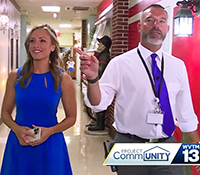 Date Posted: 10/2/2023
Date Posted: 10/2/2023

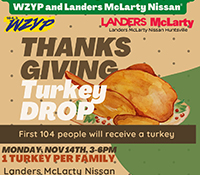 Date Posted: 12/9/2022
Date Posted: 12/9/2022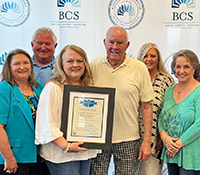 Date Posted: 10/3/2022
Date Posted: 10/3/2022 Date Posted: 4/6/2022
Date Posted: 4/6/2022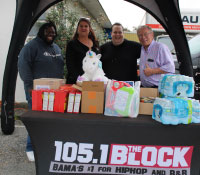 Date Posted: 12/21/2021
Date Posted: 12/21/2021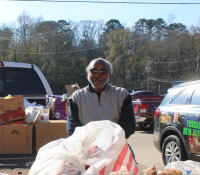 Date Posted: 12/21/2021
Date Posted: 12/21/2021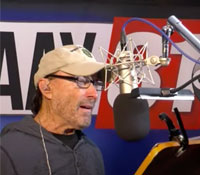 Date Posted: 11/22/2021
Date Posted: 11/22/2021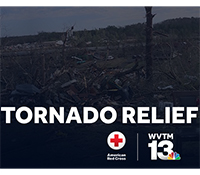 Date Posted: 2/3/2021
Date Posted: 2/3/2021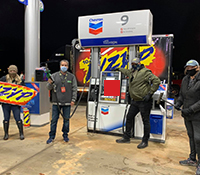 Date Posted: 12/7/2020
Date Posted: 12/7/2020 Date Posted: 10/6/2020
Date Posted: 10/6/2020 Date Posted: 9/16/2020
Date Posted: 9/16/2020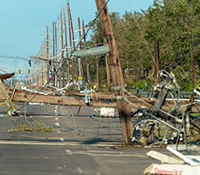 Date Posted: 9/1/2020
Date Posted: 9/1/2020 Date Posted: 7/30/2020
Date Posted: 7/30/2020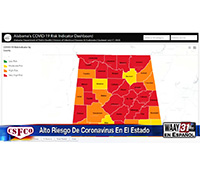 Date Posted: 7/10/2020
Date Posted: 7/10/2020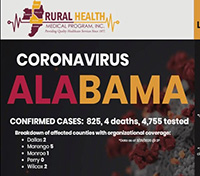 Date Posted: 7/2/2020
Date Posted: 7/2/2020 Date Posted: 6/30/2020
Date Posted: 6/30/2020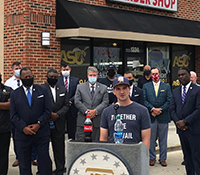 Date Posted: 6/30/2020
Date Posted: 6/30/2020 Date Posted: 6/29/2020
Date Posted: 6/29/2020 Date Posted: 6/26/2020
Date Posted: 6/26/2020 Date Posted: 6/26/2020
Date Posted: 6/26/2020 Date Posted: 5/21/2020
Date Posted: 5/21/2020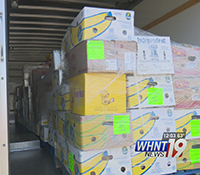 Date Posted: 5/20/2020
Date Posted: 5/20/2020 Date Posted: 5/12/2020
Date Posted: 5/12/2020 Date Posted: 5/10/2020
Date Posted: 5/10/2020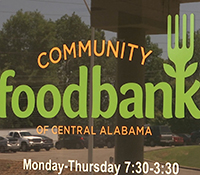 Date Posted: 5/10/2020
Date Posted: 5/10/2020 Date Posted: 5/6/2020
Date Posted: 5/6/2020 Date Posted: 5/6/2020
Date Posted: 5/6/2020 Date Posted: 5/1/2020
Date Posted: 5/1/2020 Date Posted: 4/18/2020
Date Posted: 4/18/2020 Date Posted: 4/18/2020
Date Posted: 4/18/2020 Date Posted: 4/8/2020
Date Posted: 4/8/2020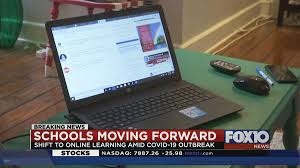 Date Posted: 4/7/2020
Date Posted: 4/7/2020 Date Posted: 9/18/2019
Date Posted: 9/18/2019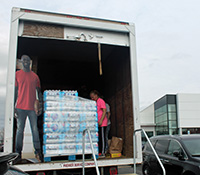 Date Posted: 4/1/2019
Date Posted: 4/1/2019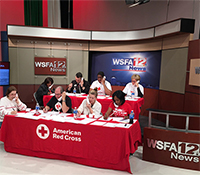 Date Posted: 3/7/2019
Date Posted: 3/7/2019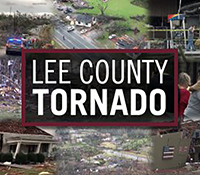 Date Posted: 3/6/2019
Date Posted: 3/6/2019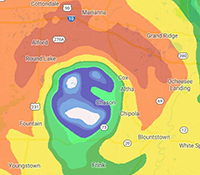 Date Posted: 11/1/2018
Date Posted: 11/1/2018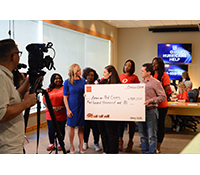 Date Posted: 11/1/2018
Date Posted: 11/1/2018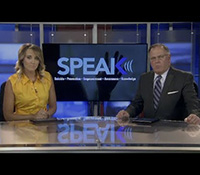
 Date Posted: 10/26/2016
Date Posted: 10/26/2016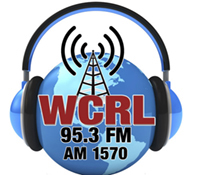 Date Posted: 9/22/2016
Date Posted: 9/22/2016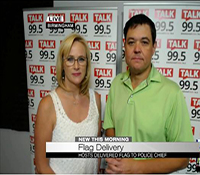 Date Posted: 8/4/2016
Date Posted: 8/4/2016 Date Posted: 5/11/2016
Date Posted: 5/11/2016 Date Posted: 3/22/2016
Date Posted: 3/22/2016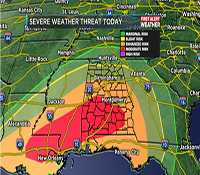 Date Posted: 2/25/2016
Date Posted: 2/25/2016 Gray Televisions CBS affiliate WTVY-TV Dothan, Ala., raised more than $32,000 for local flood relief efforts, following recent storms that ravaged the region.
Gray Televisions CBS affiliate WTVY-TV Dothan, Ala., raised more than $32,000 for local flood relief efforts, following recent storms that ravaged the region.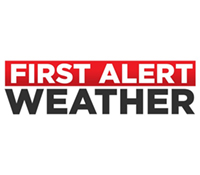 Date Posted: 2/15/2016
Date Posted: 2/15/2016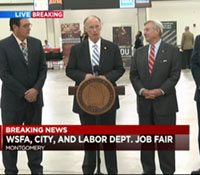 Date Posted: 2/15/2016
Date Posted: 2/15/2016 Date Posted: 12/3/2015
Date Posted: 12/3/2015 Meredith Corporations Fox affiliate WALA-TV Mobile, Ala., introduced new Saturday and Sunday morning newscasts on Aug. 8. Reporter Candace Murphy and meteorologist Matt Barrentine anchor the newscasts. On Aug. 24, WALA extended its weekday late newscast to 90 minutes, to broadcast from 9-10:30 p.m. We are committed to being the place Gulf Coast residents turn to for local news, weather and information all day, every day, said News Director Scott Flannigan. Expanding our 9 p.m. news presence gives us the chance to do more investigations, more weather coverage and be of more service to our viewers.
Meredith Corporations Fox affiliate WALA-TV Mobile, Ala., introduced new Saturday and Sunday morning newscasts on Aug. 8. Reporter Candace Murphy and meteorologist Matt Barrentine anchor the newscasts. On Aug. 24, WALA extended its weekday late newscast to 90 minutes, to broadcast from 9-10:30 p.m. We are committed to being the place Gulf Coast residents turn to for local news, weather and information all day, every day, said News Director Scott Flannigan. Expanding our 9 p.m. news presence gives us the chance to do more investigations, more weather coverage and be of more service to our viewers.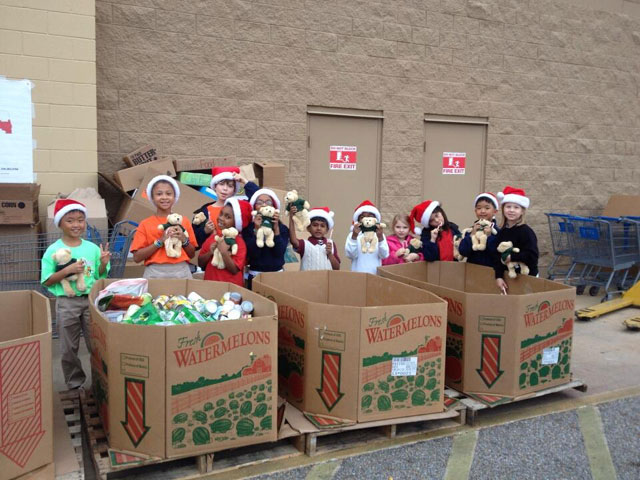 Raycom Media owned NBC affiliate WSFA-TV Montgomery, Ala. hosted its annual 12 Days of Giving event this December. The event raised money, food, and toys for families in need during the holiday season. The proceeds benefited the Montgomery Area Food Bank, Christmas Clearinghouse, and Toys for Tots. In total, $33,000 was raised in addition to 10,245 pounds of food and nearly 4,000 toys.
Raycom Media owned NBC affiliate WSFA-TV Montgomery, Ala. hosted its annual 12 Days of Giving event this December. The event raised money, food, and toys for families in need during the holiday season. The proceeds benefited the Montgomery Area Food Bank, Christmas Clearinghouse, and Toys for Tots. In total, $33,000 was raised in addition to 10,245 pounds of food and nearly 4,000 toys. Raycom Media owned FOX Affiliate WBRC-TV Birmingham, Ala. hosted a variety of community initiatives in 2014, including six Shred-A-Thons that allowed community members to shred 50,000 tons of documents.
Raycom Media owned FOX Affiliate WBRC-TV Birmingham, Ala. hosted a variety of community initiatives in 2014, including six Shred-A-Thons that allowed community members to shred 50,000 tons of documents.
 Raycom Medias NBC affiliate WSFA-TV Montgomery, Ala., hosted the Summer Fund and Food Drive to benefit the Montgomery Area Food Bank. The station helped collect non-perishable food items and monetary donations to help feed those in need across Alabama. WSFA-TV promoted the drive, broadcast live from the event and WSFA-TV anchors helped collect donations. In total, WSFA-TV helped collect 2,599 pounds of food and $11,000, which will purchase a total of 73,000 pounds of food.
Raycom Medias NBC affiliate WSFA-TV Montgomery, Ala., hosted the Summer Fund and Food Drive to benefit the Montgomery Area Food Bank. The station helped collect non-perishable food items and monetary donations to help feed those in need across Alabama. WSFA-TV promoted the drive, broadcast live from the event and WSFA-TV anchors helped collect donations. In total, WSFA-TV helped collect 2,599 pounds of food and $11,000, which will purchase a total of 73,000 pounds of food. LIN Medias FOX affiliate WALA-TV Mobile, Ala., hosted a debate for candidates running for Baldwin County Sheriff. The live, one-hour debate was televised live on WALA-TV, simulcast on LIN Medias CW affiliate WFNA-TV Mobile, streamed live on the WALA-TV website and the stations news app for smartphone and tablet devices.
LIN Medias FOX affiliate WALA-TV Mobile, Ala., hosted a debate for candidates running for Baldwin County Sheriff. The live, one-hour debate was televised live on WALA-TV, simulcast on LIN Medias CW affiliate WFNA-TV Mobile, streamed live on the WALA-TV website and the stations news app for smartphone and tablet devices. Media Generals WVTM-TV Birmingham collected 42,000 new and gently used books during the Birmingham Reads Book Drive, part of a multi-day annual event held in conjunction with Better Basics, a non-profit organization dedicated to advancing literacy. WVTM-TV broadcast live cut-ins throughout the drive, and station employees helped receive book donations from individuals and organizations. The collected books were delivered to students in need throughout the Birmingham area. Gene Kirkconnell, WVTM-TVs vice president and general manager, said, "We are honored to partner with Better Basics in their important mission to help our communitys children learn to read, comprehend and develop a thirst for knowledge."
Media Generals WVTM-TV Birmingham collected 42,000 new and gently used books during the Birmingham Reads Book Drive, part of a multi-day annual event held in conjunction with Better Basics, a non-profit organization dedicated to advancing literacy. WVTM-TV broadcast live cut-ins throughout the drive, and station employees helped receive book donations from individuals and organizations. The collected books were delivered to students in need throughout the Birmingham area. Gene Kirkconnell, WVTM-TVs vice president and general manager, said, "We are honored to partner with Better Basics in their important mission to help our communitys children learn to read, comprehend and develop a thirst for knowledge." Raycom Medias NBC affiliate WAFF-TV Huntsville, Ala., has teamed up with Kroger and the American Red Cross to help victims of the recent storm in northern Alabama. WAFF-TV is encouraging viewers to make monetary donations for the tornado relief efforts at the checkout counter at any local Kroger grocery store through May 10. All proceeds will be donated to the American Red Cross. Click
Raycom Medias NBC affiliate WAFF-TV Huntsville, Ala., has teamed up with Kroger and the American Red Cross to help victims of the recent storm in northern Alabama. WAFF-TV is encouraging viewers to make monetary donations for the tornado relief efforts at the checkout counter at any local Kroger grocery store through May 10. All proceeds will be donated to the American Red Cross. Click 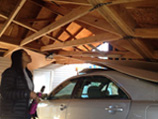 A Brandon Elementary School teacher, Alicia Jenkins, thanked both God and her meteorologist friend, Derek Beasley, of Sinclair-owned WPMI-TV Mobile, Ala., for supporting her through the recent tornado in Brandon, Miss. "Those were the two who helped me through it," she said. "Im just thankful Im here." WPMI-TVs chief meteorologist told The Clarion-Ledger he is also grateful. "He sees his purpose as warning people about the threat of bad weather." Click
A Brandon Elementary School teacher, Alicia Jenkins, thanked both God and her meteorologist friend, Derek Beasley, of Sinclair-owned WPMI-TV Mobile, Ala., for supporting her through the recent tornado in Brandon, Miss. "Those were the two who helped me through it," she said. "Im just thankful Im here." WPMI-TVs chief meteorologist told The Clarion-Ledger he is also grateful. "He sees his purpose as warning people about the threat of bad weather." Click  Clear Channels WDXB-FM Birmingham held the "Heartstring for Hope" benefit concert to support St. Jude Childrens Research Hospital on February 25. The sold-out event featured acoustic performances from several local artists and raised more than $11,000 for the local St. Jude Hospital.
Clear Channels WDXB-FM Birmingham held the "Heartstring for Hope" benefit concert to support St. Jude Childrens Research Hospital on February 25. The sold-out event featured acoustic performances from several local artists and raised more than $11,000 for the local St. Jude Hospital.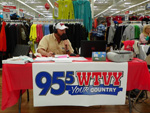 The Radio Peoples WTVY-FM Dothan, Ala., held the 13th annual radiothon for the Childrens Miracle Network. The fundraiser supported the local Childrens Hospital of Alabama in Birmingham. In total, the event raised more than $107,000, bringing the stations 13-year total to more than $1 million.
The Radio Peoples WTVY-FM Dothan, Ala., held the 13th annual radiothon for the Childrens Miracle Network. The fundraiser supported the local Childrens Hospital of Alabama in Birmingham. In total, the event raised more than $107,000, bringing the stations 13-year total to more than $1 million.
 Several Raycom Media-owned television stations conducted relief efforts following the tornado. Stations donating to the American Red Cross include WSFA-TV Montgomery, Ala. ($50,232); WMC-TV Memphis ($36,000); WCSC-TV Charleston, S.C. ($10,000); WWBT Richmond, Va. (over $7,000); and KAIT-TV Jonesboro, Ark., organized a statewide telethon. WAFB-TV Birmingham, Ala., collected several storage units full of supplies for the Salvation Army in its one day donation drive. WBRC-TV Birmingham collected 200,000 pounds of water for the Salvation Army. KOLD-TV Tucson, Ariz., filled two semi-trucks with supplies, to be distributed by World Care.
Several Raycom Media-owned television stations conducted relief efforts following the tornado. Stations donating to the American Red Cross include WSFA-TV Montgomery, Ala. ($50,232); WMC-TV Memphis ($36,000); WCSC-TV Charleston, S.C. ($10,000); WWBT Richmond, Va. (over $7,000); and KAIT-TV Jonesboro, Ark., organized a statewide telethon. WAFB-TV Birmingham, Ala., collected several storage units full of supplies for the Salvation Army in its one day donation drive. WBRC-TV Birmingham collected 200,000 pounds of water for the Salvation Army. KOLD-TV Tucson, Ariz., filled two semi-trucks with supplies, to be distributed by World Care.
 Syndicated Solutions, Inc.s Rick & Bubba Morning Shows two-day radiothon raised over $1 million and allowed 825 children in 45 countries to be sponsored through World Vision, a humanitarian organization that focuses on children and families affected by poverty and injustice. Since 2009, Rick & Bubba have raised nearly $3.5 million for World Vision.
Rick Burgess and Bill Bubba Bussey commented, When SSI introduced World Vision and we learned about how impressive an organization they are, we wanted in
The overwhelming response from our listeners and the ability to be part of something so meaningful just blows us away.
Syndicated Solutions, Inc.s Rick & Bubba Morning Shows two-day radiothon raised over $1 million and allowed 825 children in 45 countries to be sponsored through World Vision, a humanitarian organization that focuses on children and families affected by poverty and injustice. Since 2009, Rick & Bubba have raised nearly $3.5 million for World Vision.
Rick Burgess and Bill Bubba Bussey commented, When SSI introduced World Vision and we learned about how impressive an organization they are, we wanted in
The overwhelming response from our listeners and the ability to be part of something so meaningful just blows us away.
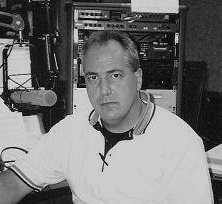 Big River Broadcasting WXFL-FM in Florence, Ala., behind morning man, Johnny Law, started a holiday food drive four years ago that has raised over 17,000 pounds of non-perishable food items. Over the years, Law has come up with some very creative ideas to help the community.
Big River Broadcasting WXFL-FM in Florence, Ala., behind morning man, Johnny Law, started a holiday food drive four years ago that has raised over 17,000 pounds of non-perishable food items. Over the years, Law has come up with some very creative ideas to help the community. 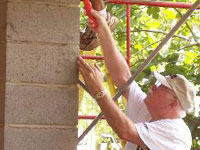
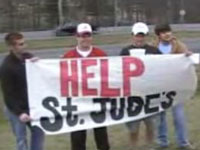
 The New York Times recognized one Birmingham station, Allbrittons WBMA-TV, for its live coverage. The local ABC affiliates veteran Meteorologist James Spann covered the mile-wide tornado as it approached his viewing area. The Times noted that following the storm Spann received hundreds of comments on his Facebook page. One viewer wrote, "I have no doubt that you saved too many lives to count." New Vision Media-owned WIAT-TVs chief meteorologist Mark Prater also covered the storm for Birminghams CBS affiliate. The Times reported Prater relied on traffic cameras and other video sources to keep his viewers informed as the twister plowed through parts of Alabama.
The New York Times recognized one Birmingham station, Allbrittons WBMA-TV, for its live coverage. The local ABC affiliates veteran Meteorologist James Spann covered the mile-wide tornado as it approached his viewing area. The Times noted that following the storm Spann received hundreds of comments on his Facebook page. One viewer wrote, "I have no doubt that you saved too many lives to count." New Vision Media-owned WIAT-TVs chief meteorologist Mark Prater also covered the storm for Birminghams CBS affiliate. The Times reported Prater relied on traffic cameras and other video sources to keep his viewers informed as the twister plowed through parts of Alabama. 


